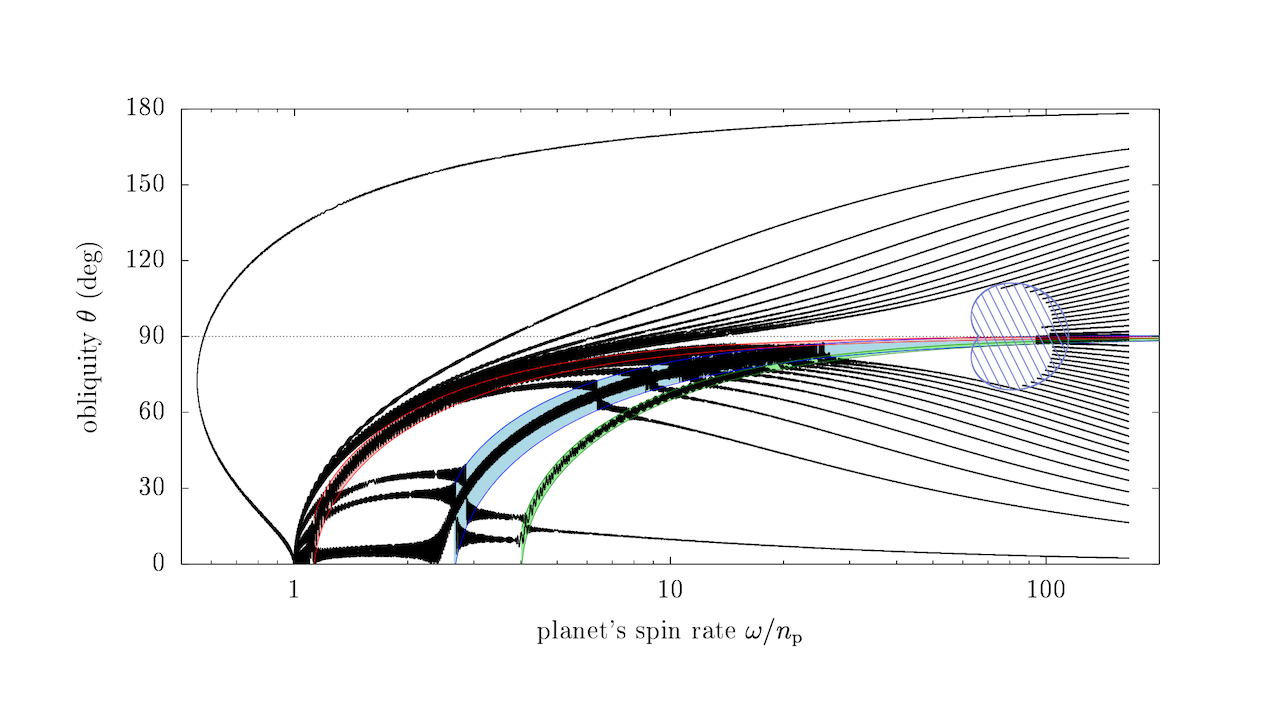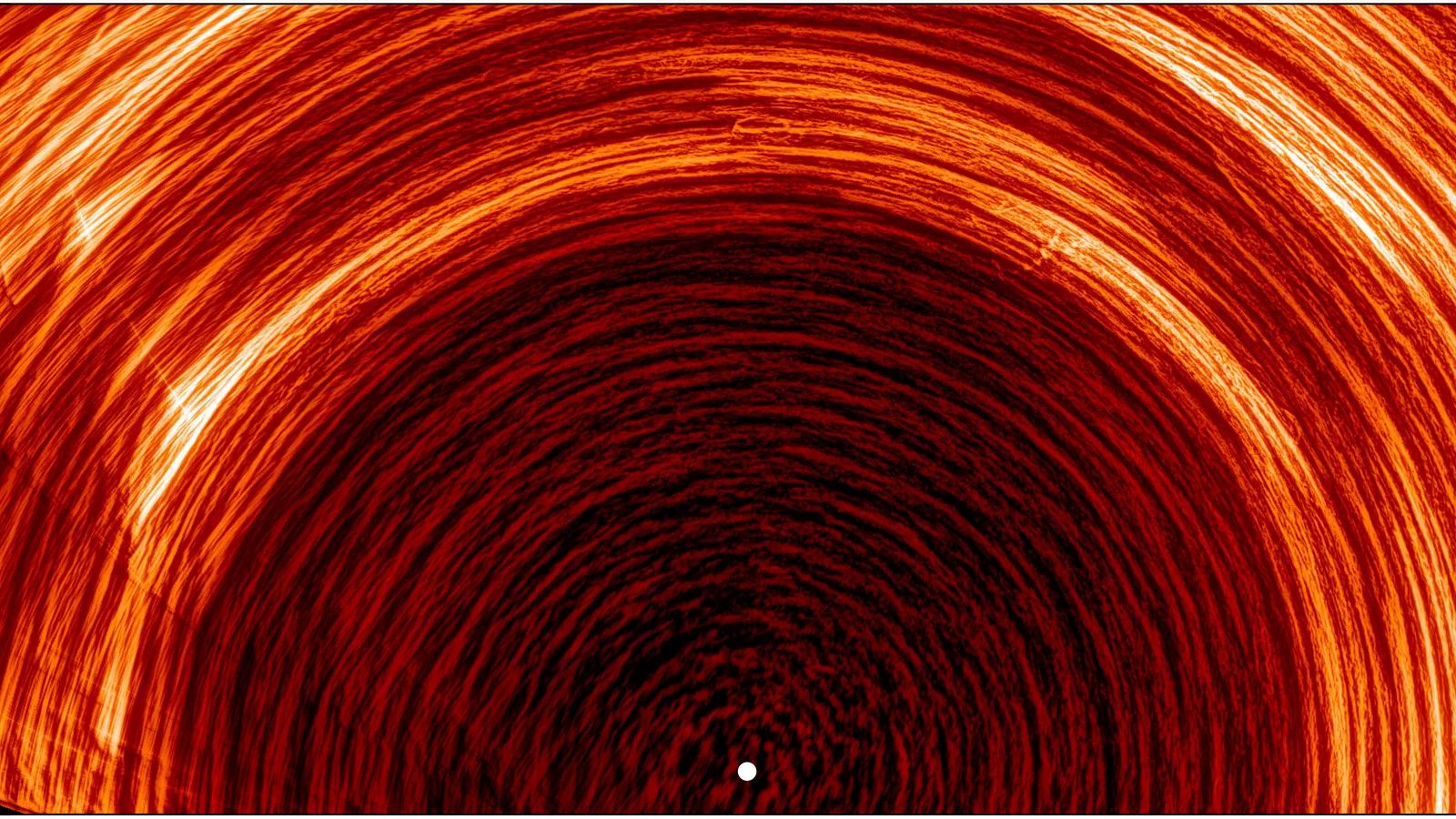Self-consistent obliquity and spin rate evolution for several realizations of exoplanet Kepler-79 d. Trajectories go from right to left. The planet is initalized with a spin rate of 7.5 hours
Hot Posts834- Page
Conditions on Venus’ surface have largely remained a mystery for decades. Carl Sagan famously pointed out that people were quick to jump to conclusions, such as that there are dinosaurs
Left, the free fluids phase and Fe-enriched blebs are entrained in the magma ocean. Center: water is outgassed to create a steam atmosphere while the Fe-enriched blebs sink toward the
WASP-39b 3D model cross sections. Shown are the local gas temperature, Tgas (left) and cloud dust-to-gas mass ratio, ρdust/ρgas (right). The values are derived from the 3D GCM results
In a striking new view from space, the European Space Agency’s Solar Orbiter has given scientists their first close-up glimpse of the sun’s magnetic field near its south pole —
If the skies are clear these next few nights, take a few moments to look up. You just might be lucky and catch a glimpse of a spectacularly bright meteor
View larger. | Astronomers have created a 3D temperature map of the exoplanet known as WASP-18b. It’s the 1st 3D temperature map ever for any exoplanet. The exoplanet, an ultra-hot
-
 012024 in Review: Highlights from NASA in Silicon Valley
012024 in Review: Highlights from NASA in Silicon Valley -
 02Panasonic Leica Summilux DG 15mm f/1.7 ASPH review
02Panasonic Leica Summilux DG 15mm f/1.7 ASPH review -
 03How New NASA, India Earth Satellite NISAR Will See Earth
03How New NASA, India Earth Satellite NISAR Will See Earth -
 04And Thus Begins A New Year For Life On Earth
04And Thus Begins A New Year For Life On Earth -
 05Astronomy Activation Ambassadors: A New Era
05Astronomy Activation Ambassadors: A New Era -
06SpaceX launch surge helps set new global launch record in 2024
-
 07Space Force plans new ‘Futures Command’ amid pressure to speed up modernization
07Space Force plans new ‘Futures Command’ amid pressure to speed up modernization












